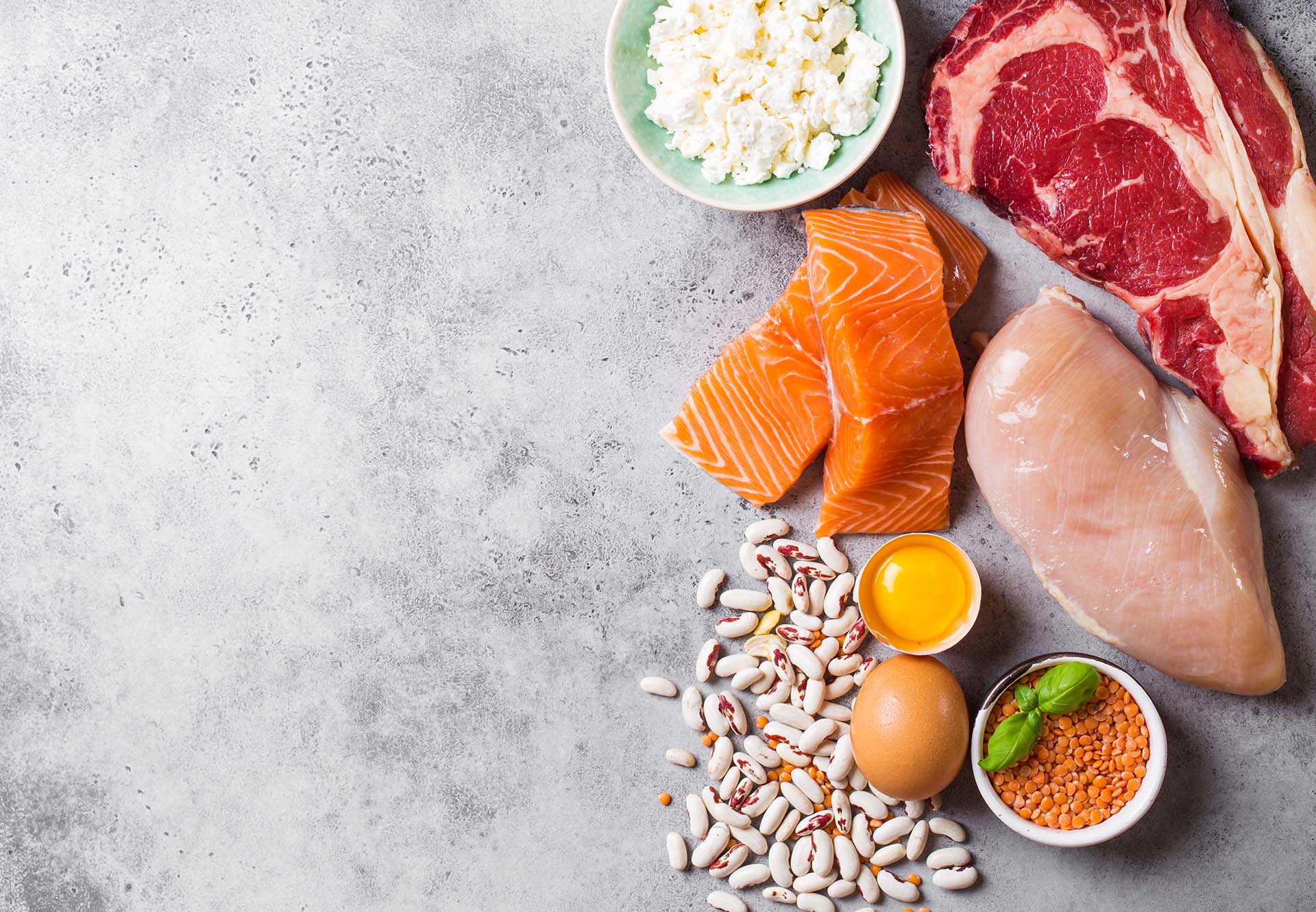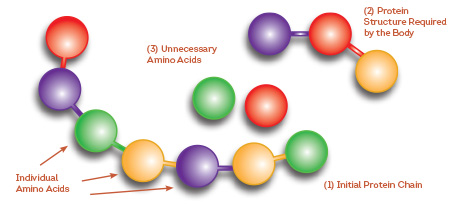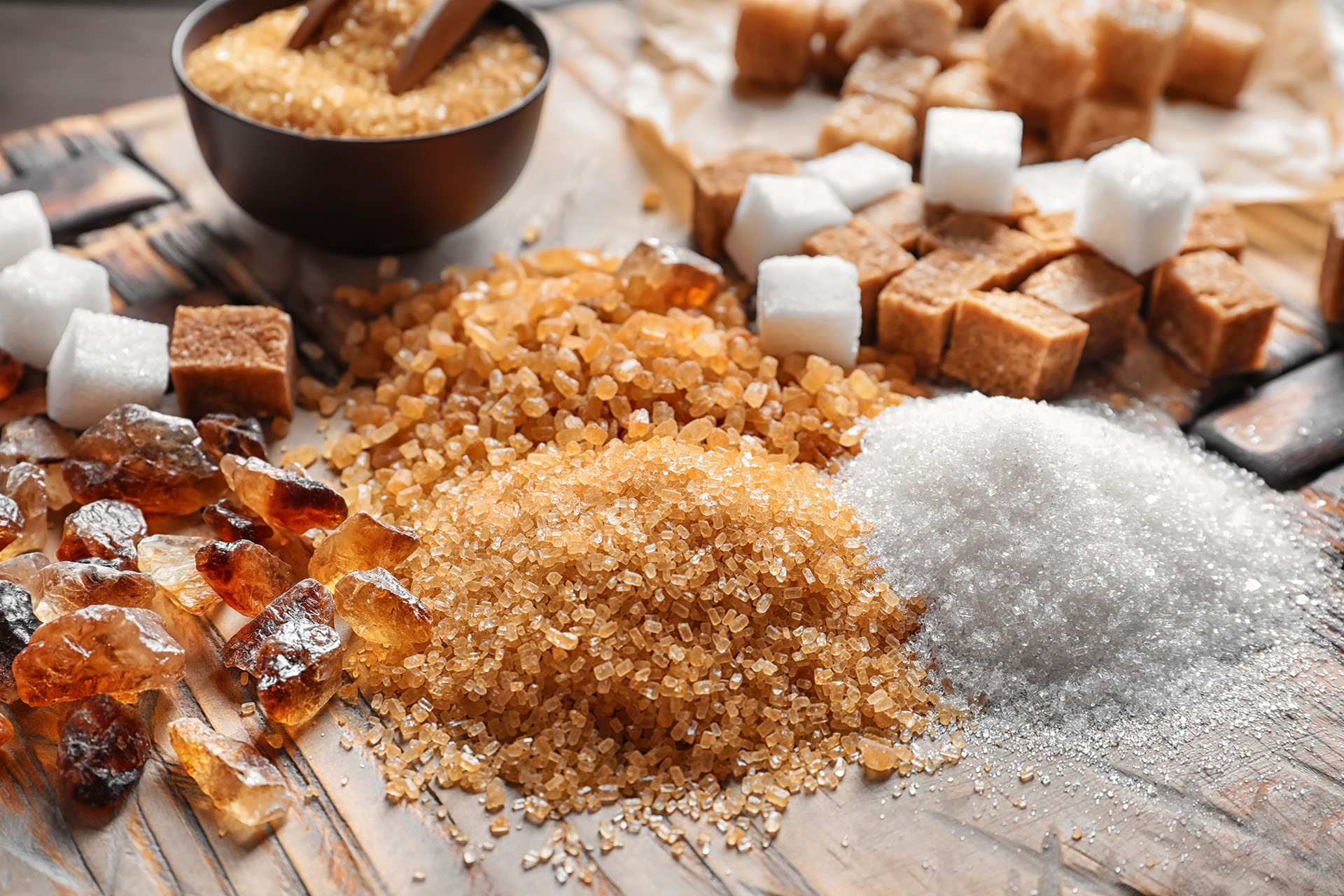The Protein & Sugar Thing
Let's take a moment to address the two major nutritional roadblocks that many people encounter when stepping into this work.

Proteins and Polysaccharides
Proteins = complex nitrogen (amino acid) structures
Polysaccharide = complex carbon (sugar) structures
Protein and polysaccharides (starches) are not considered primary foods for man’s consumption, and furthermore, they are extremely counterproductive in the cleaning and repair stages of a healing journey. They are complex, acid-forming (dehydrating) and compromise digestion.
Proteins require an acidic digestive process for their initial breakdown, whereas starches interface with base (alkaline) digestive enzymes. Each consumed on their own is bad enough, however the two consumed together will go so far as to neutralise the digestive process of one another leading to a putrefaction and fermentation event within the bowel instead of proper enzymic digestion. The most immediate knock-on effect of this, experienced in varying levels is gas, bloating, cramping, imbalanced biome, reflux, irregular bowel movement and difficulty in passing stool.
Something to think about …
When you consider that putrefaction and fermentation become the primary digester in your gut as a result of a protein/starch loaded diet, it would have to make you wonder if flatulence is really supposed to be like ‘that’ in a healthy body, or is it really as ‘rotten’ in there as it smells? A further thought to consider would be that if you opened your refrigerator and something in there smelt like some ungodly bomb you’d just dropped, what would you think about that, what would you say (either aloud or to yourself), and furthermore, what would you do with it?
Understanding Proteins

Foods that have a high concentrate (complex) structure of amino acids are called proteins. This includes flesh (muscle, organ, gland tissues, etc.), and to a lesser degree, nuts, beans, and sometimes starches (like grains).
Amino acids are the basic building blocks of proteins. These are used to build the tissue structures of our body, they act as vehicles to transport other important molecules, and they can buffer chemistry to create a balance. These amino acids group together in a specific sequence to become a useable/functional protein. They are nitrogen-rich and have dominance on the acid side when broken down.
When we consume proteins from meats, dairy, eggs, wheat, legumes and to a lesser extent, nuts and seeds, the body must first break those proteins down back through their polypeptide and peptide states, and then into their respective amino acids. These separated amino acids are then grouped into the sequences our bodies need.
This process can be thought of like a string of kiddie’s pop beads, with each individual bead representing an amino acid and the completed chain of beads a protein:
- When we eat a protein, the body must ’pop apart‘ those beads.
- The necessary beads are then recombined in the order the body requires, and
- The unnecessary beads are discarded.
This process requires a lot of energy to accomplish, along with an initial acid (hydrochloric acid releasing pepsin) to break these complex proteins back down through the peptide stages and finally into amino acids before your body can use them. This is why we call proteins, especially the ones comprising animal flesh, ‘second-hand aminos’ as they have already been used to build a structure that looks nothing like ours, and significant rework has to be done before they are of any use to us at all.
The fruits and vegetable matter contain our primary source of ‘first-hand’, superior amino acids. The hydrating nature of the vehicle these aminos are delivered in further support our health by leaving only an alkaline ash.
It’s important to remember that your body will never burn amino acids unless there is absolutely nothing left to burn and your survival or energy output depends on it. The process the body must go through in order to deaminate (break down amino acids) is difficult, highly toxic, and the body has about as much enthusiasm to do it as a five-year-old being asked to clean his or her room. To burn aminos for energy is the analogical equivalent of burning structural parts of your house in the fireplace for fuel. Carbon (carbohydrates), lipids (fats) and oxygen are used for energy and these are found in volumes throughout fruits, salads and vegetables. All foods contain amino acids, this gives them their structure and without them nothing would have any ability to hold form. The amino acids comprising fruits are simple and easy for your body to break apart and use, whereas complex proteins can be constipating and putrefactive, causing toxaemia and acidosis. With that in mind, you could see how consuming complex animal proteins would be causation for eye-watering bodily odours, where fruits and vege matter hydrate and clean the body, producing very little to nil odour whatsoever.
NB: Deamination can be recognised by the ammonia-like smell and taste one experiences when such a state is encountered. If you are experiencing this, please reach out to us. There are a number of things that could be occurring and it’s important you investigate further.
The Sugar Myth

Understanding Sugars (Saccharides)
As the engine in your car needs a carbon-based fuel to run, so does your physical body. The fundamental constituents your body needs to function are amino acids, fatty acids, and sugars. It is sugar combined with oxygen that allows your body to run the machine at its optimal peak levels, generating the highest performance.
To understand sugars better, simple definitions of sugars are necessary.
Monosaccharide: A single or simple sugar, i.e., fructose, glucose and galactose (also known as simple carbohydrates). A simple sugar cannot be broken down any further and therefore requires very little energy to digest.
Disaccharide: Two simple sugars combined, e.g., sucrose, maltose and lactose.
Oligosaccharide: Definitively similar to disaccharides.
Polysaccharide: Complex sugars consisting of several glucose/fructose bonds e.g., starch, cellulose and glycogen. These require tremendous energy to digest by comparison to the singular simple sugar, as well as a far higher involvement from your adrenal glands in the production of cortisol.
The process of digestion serves to separate the simple from the complex. Just as your body cannot use complex proteins or fats and must break them down into their single amino acid or fatty acid structures before they can be put to use, the body must also break down a complex simple sugar structure (di or polysaccharide) into its simple sugar components for the same purpose—it’s of no use to the body while it’s in its complex state.
With the lines now taking shape, it should start to become evident that sugars play a lead role in health. Your body mixes glucose or fructose with oxygen to achieve cellular energy known as ATP (adenosine triphosphate). Without ATP, a cell will weaken, becoming hypo in function and will be rendered prone to parasitic attack. It can also become open to bond with a viral structure, or antigen, inducing a sense of ‘sickness’. The more cells affected in the body, the more exacerbated the felt symptoms.
So, sugar (carbon) and oxygen are the number one need of your body. When you consume complex sugars, as with anything complex, your body now has to deal with the need for more cortisol and the overload of simple sugars, and now has to store them as fat, excrete what it can, and use the fungal family to help it rid itself of all the unneeded sugar through fermentation. This causes further excessive acidosis. If the adrenal glands are fatigued or weak and cortisol levels are running low, blood sugar problems are often the next stop. The same is true with proteins and fats. A lot of man’s toxaemia comes from excess proteins, fats, and sugars, which are broken down into acids, stored and/or parasitically acted upon. With a stagnant lymphatic system, this creates systemic acidosis and dysfunctions, body odours, culturing of parasites (bacterium, protozoa’s, etc.), all of which start the inflammatory (immune) response and the atrophy of the body.
When you feel low in energy or wake up tired regardless of sleep duration, 99% of the time it’s your adrenal glands. A common mistake is thinking that protein is our energy source instead of a sugar (carbohydrate). This is old thinking and doesn’t hold water. The only energy we feel from meat is the residual adrenalin (epinephrine) in the meat from its death and the occasional stimulus from the hit of acid chemistry.
Always remember simple carbon and oxygen (carbohydrate) is our main source of chemical energy and not proteins. It is only the adrenaline or epinephrine in meat that gives the illusion of an energetic provision. The adrenaline bump from excessive meat consumption can have a knock-on effect in disrupting the natural production of stress hormones and their rhythms within the body. Your adrenal glands are charged with, and responsible for, the supply of adrenaline as needed for nerve functions, if an exogenous supply is being consumed, the glands risk becoming confused which can result in hypofunction.
Fruit (sugars) and candida (fungus)
It is said, ‘sugars feed candida’. They don’t, and by now, these myths should be starting to dissolve in your mind. However, if you need more of a convincer, consider this example:
If you take a piece of cheese, a slice of bread and a handful of just ripe grapes, put them on your kitchen bench and observe the order that mould (fungus) grows on them. You will notice there will be little time between the bread and cheese. The fruit will only grow mould as it begins to ferment. Since the cheese and bread are already fermented, the mould has an implied, almost immediate dinner reservation.
Remember, nature uses the parasitic kingdom to clean up after itself. This may entail eliminating items that are of no use, damaged, or in some way unable to support life appropriately. Fermentation and putrefaction are the processes of decay, or breakdown which require parasitic action. Healthy cells and hydrated lymph do not require parasitic action and therefore no parasitic overburden can exist. With this understanding, we can deduce that candida (yeast, fungus, moulds, warts, etc.) far prefer starches and excess sugars. These are in fact their version of a superfood and provides further context into the dietary suggestions within this manual.
Sugars (fruit) and cancer
‘Sugars feed cancer’ is another tremendous myth often with catastrophic outcomes. To claim sugars feed cancer is to deny what decades of science has proven and to starve the body for a sugar is to starve the cell of its energy. So, on one hand, you do starve the malignant cells, however you also starve the healthy cells of their energy to do anything about it. While there is more to consider in the correction of the causation, this in itself is a classic ‘cut off the nose to spite the face’ type of arrangement where the only thing left suffering is you.
This very issue is a major component in the causation of the ‘cancer’ states in the first place.
Starvation, acidosis, and ketosis damage cells and a damaged cell is well on its way to being rendered ‘a-typical’. From there, whether it becomes a malignant cell or not is at the mercy of the destructive switch and genetic predisposition, assuming that hasn’t been addressed prior.
NB: It is worth noting here that no one is a victim of their genes—you are a victim of culture and traditions and you have complete control over that when you choose to take that control.
Acids, of course, are what damage a cell in the first place. Acidosis is caused by eating foreign proteins, refined fats or too many supplementary fatty acids. The body operates best in simplicity—more is not better, in fact, less is often used to create ‘better’ e.g., fasting of all types, finishing a meal mildly under-full, etc.
Vegetables (glucose-dominant) are a highly promoted and generally accepted option in the world of cancer management, however, as said previously, glucose and fructose are both simple sugars. To say a fruit feeds cancer is also saying vegetables feed cancer. This is a level of thinking that keeps the evolution of health care on the hamster wheel.
The entire concept and implementation of the ‘dis-ease’ model places the focus on symptoms and distracts you from the true causative factors. Reframed, the term ‘dis-ease’ has you thinking the symptom is the cause and the suppression of that symptom equals a return to health… this is an illusion and absolutely untrue.
Chemistry and physics reign supreme. Nothing is immune to its laws, there is simply cause and effect, the labels of dis-ease are merely allopathic language given to a set of symptoms that arrive in a certain location and goes nowhere in addressing the true causation of the issue. The symptoms you are experiencing are only ever alerting you to a deeper level of problem.
There are many properties that make fruit superior to vegetables. Fruits are high in antioxidants and astringents and will move your lymphatic system. This is why you might see a lymphatic (mucus) response when fruit is consumed and that is exactly what you want! Fruits, being a simple sugar, are superior for blood sugar conditions, pancreatitis, hepatitis, and all other gastric and intestinal conditions. Fructose does not require insulin or extensive digestive enzymes to support its journey into a cell. Fruits magnetic (electrical) energy is the highest of all foods, making them superior brain and nerve foods. They will bring energy to the body where most other foods take it away. Never fear the use of fruits. We typically reverse various types of congestive illness in less than 16 weeks. We have seen chronic cases within the lymphatic system itself cleaned up in 45 days, chronic organ issues cleaned up in 56 days, and the list goes on and on…
Detoxification and fruits
Superior deep-tissue detoxification can only take place with fruits, water fasting and aligned botanicals. Vegetables, because of their lower energetic, antioxidant and astringent properties, will only detoxify you so far, and then you will reach a plateau. This is seen often, especially in detox and health retreat centres as their focus is still on macro nutrition as opposed to energetics. The body will always crave fruits! Add fruit and botanicals to the mix and you will achieve a level of wins over any condition that you have created.


